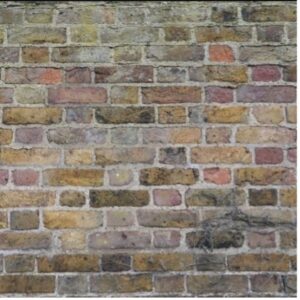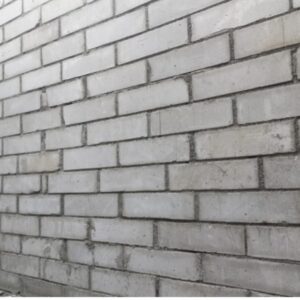According to the latest report of Global Alliance of Building and Construction, the building and construction sectors account for 34 % of the total energy used globally and is responsible for 37% of carbon emissions1. Although similar India-specific data is not available, broad trend from urban India would generally be comparable. The recent report of the Ministry of Environment, Forest and Climate Change of the Government of India, quoting the publication by Ahuja, M. and & Soi, U, admits that buildings account for more than 40 % of India’s energy consumption in cities2.
Earlier data (2018) of the Ministry of Statistics and Program Implementation – Government of India, showed that the building sector in India consumes over 30% of the total electricity consumed in India, out of which 75% is used in residential buildings3. The Energy Conservation Building Code of India (ECBC) refers to the projections made by the NITI Aayog, which shows that the electricity consumptions in residential buildings is going to rise from 260 TWh in 2016-17 to anywhere from 630 and 940 TWh in 2032 – a jump of nearly 2 to 3.5 times4,5!
The National Building Code divides India into five climatic zones, namely, hot-dry, warm-humid, composite, temperate and cold. Most of India’s land mass falls in the first three zones i.e. hot-dry, warm-humid and composite. Thus, the major requirement for the buildings in the urban and semi-urban areas in India is for cooling for a greater part of the year. While the architects adopt a variety of passive design features like building orientation, shading, envelop etc. to minimize the heat transmission in buildings, the use of electric fans, air coolers and air conditioners are rapidly growing in India. In certain parts of rural areas, the erstwhile traditional roofing system, which mostly consisted of using the locally-available materials, is fast being replaced with reinforced concrete roofs.
As far as walling systems are concerned, a variety of locally-available materials are being used in different climatic zones in India. While the sun-dried clay bricks have been used in rural parts of India since ancient times, the north-eastern parts of the country have been using the abundantly available bamboo in the walling system. For more durable applications, the sun-dried clay bricks were replaced by fired clay bricks, the latter mainly in the urban areas. The advent of cement and concrete gave an impetus to the use of solid and hollow concrete blocks. In the meantime, as fly ash became available from thermal plants the usage of fly ash-based bricks also picked up. As the height of buildings started shooting up in urban areas, the need to reduce the deadload in buildings gave rise to the usage of Autoclaved Aerated Concrete (AAC) blocks.

Fired Clay Bricks

AAC Blocks
Presently, no authentic data is available on the walling market size in India. However, a roughly estimated current walling requirement is believed to be in the range of 200 to 225 billion bricks/annum. Traditionally, fired clay bricks were produced in India using labour-intensive technique, utilizing conventional bull’s trench kilns or other make-shift thermal treatment. There is a large variation in the quality of such bricks in view of inadequate heat treatment and/or inadequate quality of the clay. Further, inefficient heat treatment and lack of other regulatory mechanisms adopted by brick manufacturers resulted in closing of many production facilities of fired clay bricks.
The use of fly ash bricks has been growing in India, especially after the central and some state government agencies made it mandatory to use fly ash for making bricks within a 40-km radius of thermal power plants. One noteworthy development in this area was the evolution of fly ash-lime-gypsum (FaL-G) bricks by the Institute for Solid Waste Research & Ecological Balance (INSWAREB). In a private communication with the present author, the Director of the Institute informed that during the past decades or so, around 27,000 FaL-G brick plants have been established throughout India, producing around 81 billion bricks per annum6! INSWAREB claims that FaL-G bricks have helped in conserving around 280 million tons of precious agricultural topsoil per annum.
In recent years, the usage of AAC blocks has picked up in the urban centres of India. It is well known that AAC block is formed on the reaction of aluminium with blended proportion of cement, gypsum, fly ash and lime in a modern manufacturing facility. These blocks are lightweight and have relatively better thermal and sound insulation properties.
According to Autoclaved Aerated Concrete Producers’ Association, the AAC industry witnessed 10-fold growth in the past few years7. It is reported that India has 25-plus AAC manufacturers with accumulative capacity of 4 million m3. According to Globewire, the AAC blocks and non-reinforced panels market is predicted to witness noteworthy growth in India in the forecast period, 2020–20278.
Thermal comfort is an influencing factor for energy consumption and is an integral factor in the design of energy-efficient buildings. The thermal resistance (R) and thermal transmission (U) values of the walling materials play important roles deciding the level of thermal comfort in buildings. The IS 3792-1978 provides thermal transmission values of different walling materials. It can be seen that as the thickness of bricks with plaster on both sides increases, the U value decreases from 3.0 W/m2.K (for 11.25 cm brick) to 1.35 W/m2.k (for 45 cm bricks). The corresponding values of U for 15-cm concrete block is 3.29 and that for 10-cm hollow block is 2.79 W/m2.K. The U value of 230-mm thick AAC block is reported to be 0.67 W/m2K.
The building envelop consisting of roof, external walls and windows has considerable impact on thermal comfort and hence on the energy use in residential buildings. The Energy Conservation Building Code (ECBC) defines ‘Residential Envelope Transmittance Value’ (RETV) as the parameter which accounts for heat conduction through external walls/windows. This code specifies that the RETV for the building envelope (except roof) for four climate zones in India, namely, composite, hot-dry, warm-humid, and temperate Climate, shall be less than 15 W/m2.The team of architects and structural engineers need to give due consideration to the U and RETV values while specifying the walling system for a building. Two comparative studies are available for general guidance.
In a seven-storey residential housing project constructed in Rajkot, Greentech Knowledge Solutions Pvt. Ltd. (GKSPL) and CEPT University-Ahmedabad selected one tower for evaluating the performance of different samples of walling materials on the thermal transmittance coefficient and RETV values9. It was observed that 31 out of 43 solid brick types could satisfy the RETV requirement of 15 W/m2K specified by the ECBC. The AAC and CLC blocks had the lowest RETV value of 9.5 W/m2. While the fly ash bricks had RETV value of 11.93 W/m2.K, the use of solid concrete and calcium silicate bricks exceeded the threshold value of 15 W/m2.K.
In another study conducted by the Central Building Research Institute (CBRI), thermal performance and comfort conditions in a prefabricated reinforced concrete building with AAC blocks, located in the composite climate zone of Uttarakhand, were evaluated10. It was observed that thermal performance properties of AAC walling assembly were good during summer season but it was poor during peak winter. The reinforced concrete roof has shown poor performance during both peak winter and summer. For buildings located in hot-dry and warm-humid climate zones, where the weather conditions are more demanding than those from composite climate zone, the performance of AAC blocks and reinforced concrete elements may possibly be less satisfactory.
With the aggravating climate change scenario, India is bound to experience higher temperature extremes. In fact, a recent World Bank report warns that by 2030, India may account for 34 million job losses from the decline in heat-stress associated productivity and that by 2050 the country may experience heat waves that break the human survivability limit11!
Climate resilience demands that the buildings that we are constructing now need to take account of the demanding futuristic climate scenario. Simultaneously, energy demand for the growing urban population in India is expected to be doubled by 203712. Considering such challenging situation, can the professionals from the Indian construction industry including the R&D community look into the thermal insulation issue of buildings duly considering the realist futuristic demands and come out with appropriate solutions? LCCF would welcome development of innovative, climate-friendly and cost-effective walling systems and would like to publish the same in the newsletter for wider dissemination.
Incidentally, walling system provides great opportunity to encapsulate agro-industrial waste, recycled aggregates and a variety of other waste products. Thus the challenge is to have a thermally-efficient walling system that is capable of absorbing recycled materials too.
References
- 2022 Global Status Report for Building and Construction, Published by Global Alliance of Building and Construction, United Nations Environment Program, 2022.
- India’s Long-term Low-Carbon Development Strategy, Report submitted by the Ministry of Environment, Forest and Climate Change of the Government of India to the United Nations Framework Convention on Climate Change (UNFCCC) held in Egypt.
- Energy Statistics 2018, Ministry of Statistics and Programme Implementation (MoSPI), 2018. New Delhi, Government of India.
- Energy Conservation Building Code for Residential Buildings (Eco-Niwas Samhita 2018), Bureau of Energy Efficiency, Ministry of Power, Government of India.
- NITI Aayog. India Energy Security Scenario, 2047, NITI Aayog, Government of India. Available at http://indiaenergy.gov.in/iess/
- Private communication from Mr N Kalidas, Director-INSWAREB, Visakhapatnam.
- Autoclaved Aerated Concrete Producers Association, http://www.iaacpa.org/index.php
- Globewire https://www.globenewswire.com/en/news-release/2023/01/03/2582265/0/en/India-AAC-Blocks-and-Non-reinforced-Panels-Market-Anticipated-to-Hit-11-095-0-Thousand-Cubic-Meters-Growing-with-14-3-CAGR-in-the-2020-2027-Timeframe-129-Pages-Released-by-Research.html#:~:text=filingsmedia%20partners-,India%20AAC%20Blocks%20and%20Non%2Dreinforced%20Panels%20Market%20Anticipated%20to,Pages%5D%20%7C%20Released%20by%20Research%20Dive
- Rawal, R., Maithel, S., Shukla, Y., Rana, S., Gowri, G., Patel, J., & Kumar, S. Thermal performance of walling material and wall technology, Part-1. June 2020, Source: http://carbse.org/https://www.beepindia.org/https://www.gkspl.in/publications/
- Unni, P Manjula, Kulkarni, Kishor S, Mukesh Kumar and Shanmuga Priya T, Thermal comfort monitoring of prefabricated building in composite climate zone of India, Presented in 2nd International Conference ‘Changing Dimensions of the Built Environment’ organized by School of Architecture, Planning and Design, DIT University, Dehradun, September 15-17, 2022
- Climate Investment Opportunities in India’s Cooling Sector, World Bank Source: https://documents.worldbank.org/en/publication/documents-reports/documentdetail/099920011222212474/p15743300f4cc10380b9f6051f8e7ed1147
- Long-term Electricity Demand Forecasting, 19th Electrical Power Survey, Central Electricity Authority, Ministry of Power, GOI (2019)

